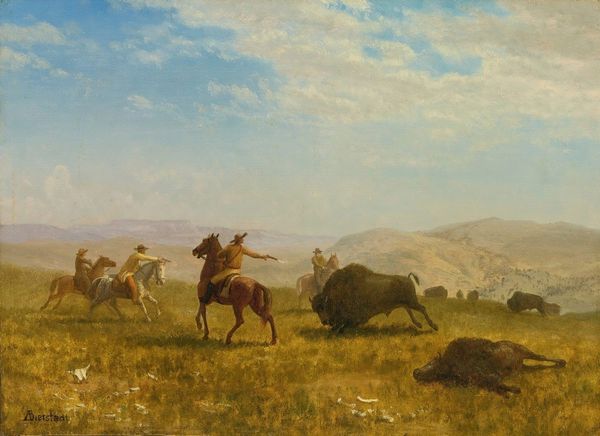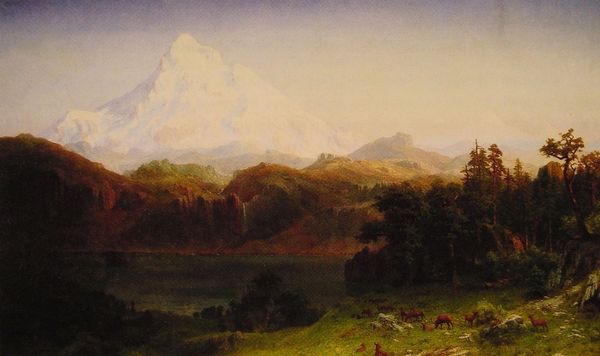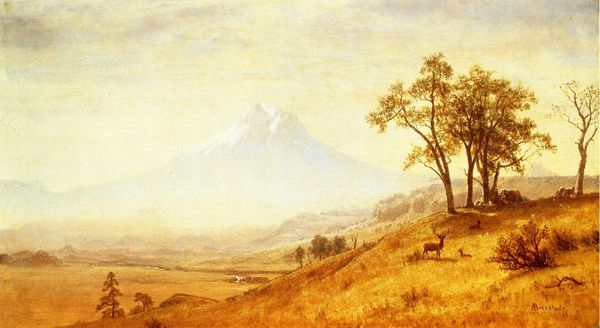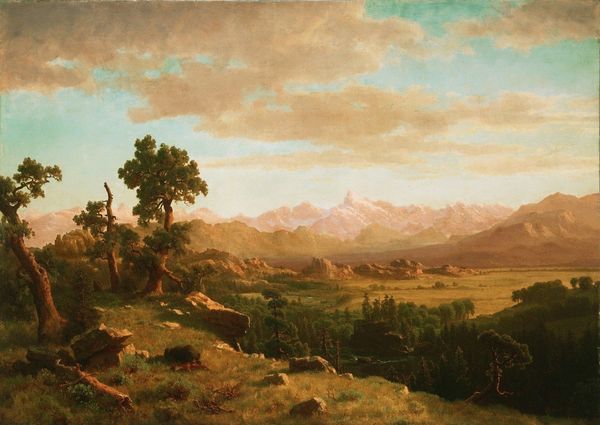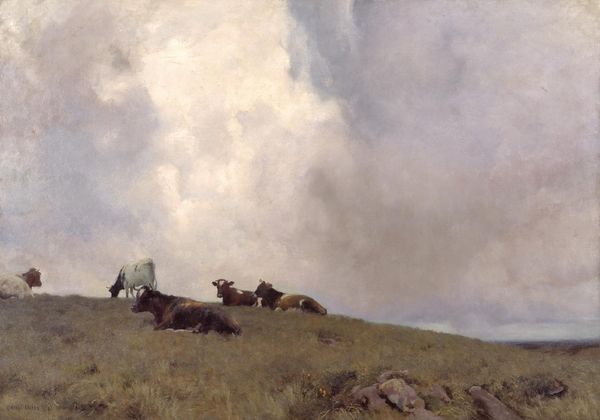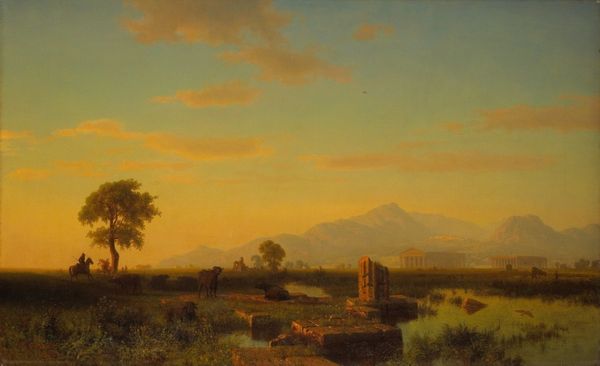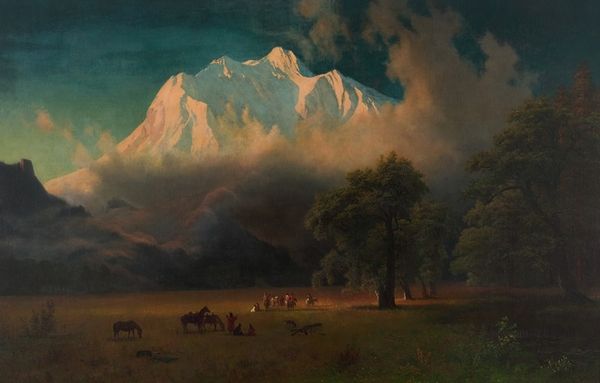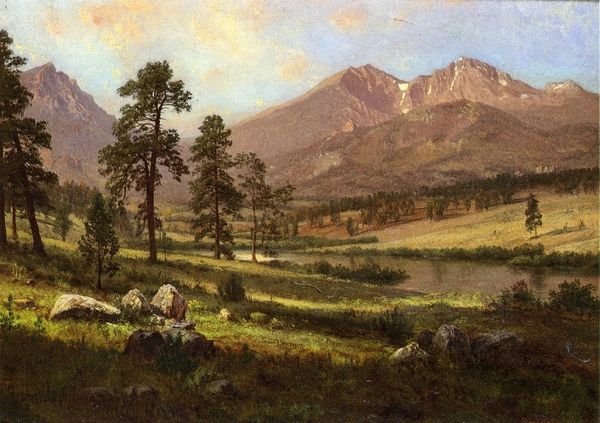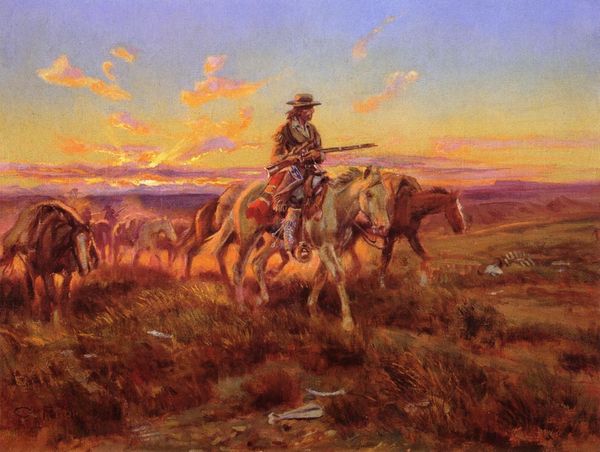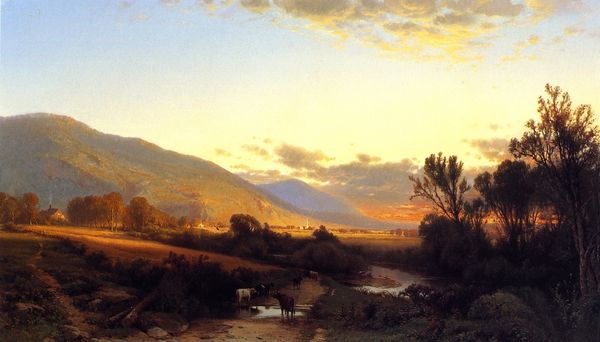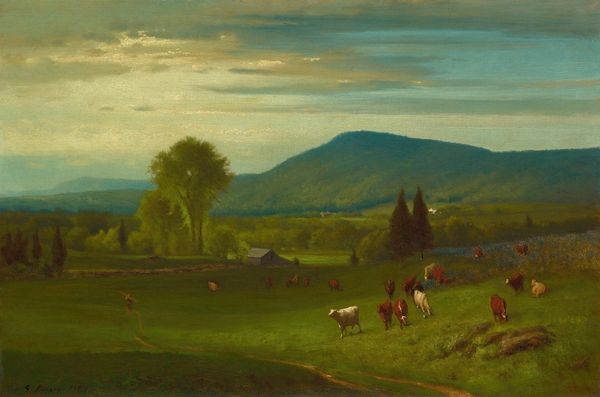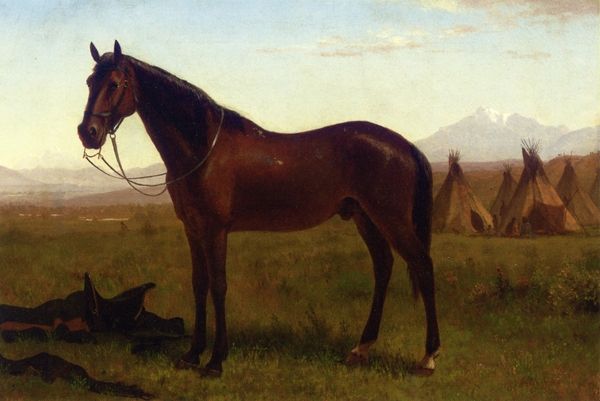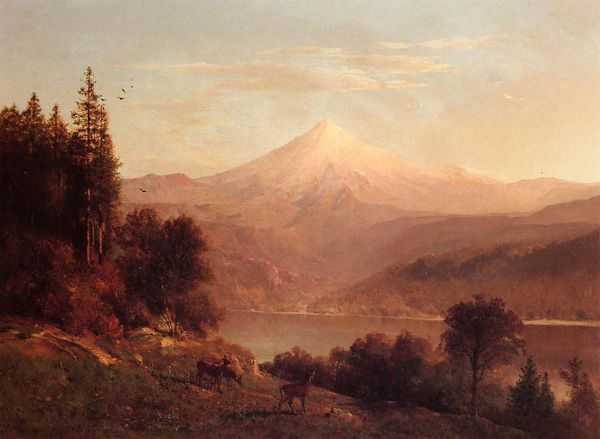
Copyright: Public domain
Albert Bierstadt painted "Buffalo on the Plains" using oils, a traditional medium for artists since the Renaissance. Yet, the inherent qualities of oil paint are crucial to understanding its impact, here. Consider the texture: the smooth, almost polished finish allows light to glide across the surface, creating a luminous effect. Bierstadt built up layers of transparent glazes to achieve this, a labor-intensive process demanding time and skill. Look at the way the light interacts with the buffalo's fur, the subtle gradations of color in the sky, and the sharp detail of the landscape. These effects simply aren't achievable with other media. Bierstadt's technical virtuosity is undeniable, but it's important to remember that this was also a commercial endeavor, appealing to a market eager for romanticized images of the American West. The sheer amount of time involved in the production process, the mastery of technique, and the demand for such images all contributed to the painting's value, both aesthetic and financial. Examining the materials and the making helps us understand the wider context of the artwork.
Comments
No comments
Be the first to comment and join the conversation on the ultimate creative platform.
